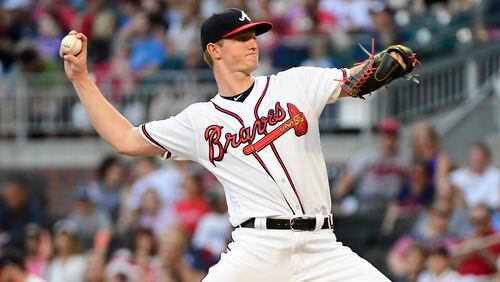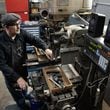The Braves just swept Miami, which happens often, and they did it with their starting pitchers yielding three earned runs over 20 innings. What I’m about to say will sound mistimed if not silly. Here goes:
I worry about the Braves’ starting pitching.
I worry – heck, I KNOW – that the Marlins of August will be rather different from the Dodgers and Cubs and Nationals of October. If we go by OPS, the Fish are the worst-hitting team in the majors. If we go by runs, they’re second-worst. They’d spruce up anybody’s ERA, and they did. The Braves’ ERA in going 15-4 against Miami was 2.63; against everybody else, it’s 4.65.
As of Friday morning, the Braves ranked seventh among 15 National League teams in starters’ ERA. Every team they’re apt to meet on the NL side of the bracket – Dodgers, Nats, Cubs, Cardinals – is above them. So is Houston, Cleveland and Minnesota. (The Yankees are not.)
Games change in October. Rotations get shortened, which could benefit the Braves but would benefit better rotations more. Starters go fewer innings, which would favor the teams with the better bullpens, and five weeks from now that might describe the Braves. As we speak, they rank 28th in the majors in bullpen WAR, probably a better measure than bullpen ERA. (They’re 18th in that category.)
Games change because so-so pitchers aren’t allowed to work many meaningful innings, and October comes down to innings. How best can a team count to nine? How soon to pull your starter? How early to summon your best reliever? The Braves gave themselves – theoretically, at least – better odds of building a working bullpen with their deadline dealing. They were not, however, able to improve their rotation. All they could do was summon Mike Foltynewicz, who started half their games in the 2018 NLDS, from Gwinnett and hope for the best.
We say for the hundredth time: Foltynewicz is the key to this rotation. If he gets good again, the Braves could use Mike Soroka, Foltynewicz and Dallas Keuchel in Games 1, 2 and 3 and then figure out Game 4. Bringing back Soroka, who's 22, on short rest isn't an option, so that leaves Julio Teheran or Max Fried. As noted, Teheran is a strange case: He's 15th among NL pitchers in ERA; he's also second in walks, and you can't walk people in October. Fried has a higher ERA but a lower FIP (fielding independent pitching). He also hasn't started a playoff game.
(Back to the Marlins. Nobody benefited more than Teheran. He started against them five times, working 32 innings. He yielded one earned run. Take the Fish out of his barrel and his ERA rises from 3.53 to 4.09.)
Going by FanGraphs WAR, the Nationals have three of the NL’s top seven pitchers. The Dodgers have three of the top 14. The Cubs have three of the top 25. The Braves have Soroka, who’s No. 9; then Fried, who’s No. 24, and then No. 30 Teheran. Keuchel’s WAR is 0.4; Foltynewicz’s is minus-0.1. Something would have to change posthaste – or they would need a break in their Division Series opponent – for the Braves not to appear overmatched in October rotations.
That’s the scary part. Bullpens become less of a thing if you’re down 4-1 after four innings. The Braves are good enough to score off even the best pitchers, but the Dodgers, Nats and Cubs can hit, too. And the list of teams that have slugged their way to 11 playoff victories is short if not nonexistent. In the end, the team that pitches best carries October. Even in this era of wanton home runs, pitching matters. My fear is that the Braves don’t have enough.
I didn’t think it would be this way. This is an organization rebuilt on young arms. This was, you’ll recall, a club that ranked second-best among in NL starters’ ERA last season. But Anibal Sanchez left and Foltynewicz fizzled and Kevin Gausman got waived and Sean Newcomb was shunted to the bullpen, and the rotation has never really purred. The Braves spent $13 million for four/five months of Keuchel, who has been only OK. If not for Soroka and Fried, this would be a second-place club.
I’m aware that young pitchers can and have ruled postseasons. (The 1991 NLCS MVP was Steve Avery, 21. The 1992 NLCS MVP was John Smoltz, 25.) But you could see those Braves coming from a mile off. The ’91 Braves were third in NL team ERA; the ’92 Braves were first, and on it went. In 2019, the average National League rotation has an ERA of 4.33; the Braves are at 4.34.
I wouldn’t mind being wrong about this – I’ve been wrong a time or two – but I have a hard time seeing these starters dominating October. There’ll be no Marlins there.
About the Author







